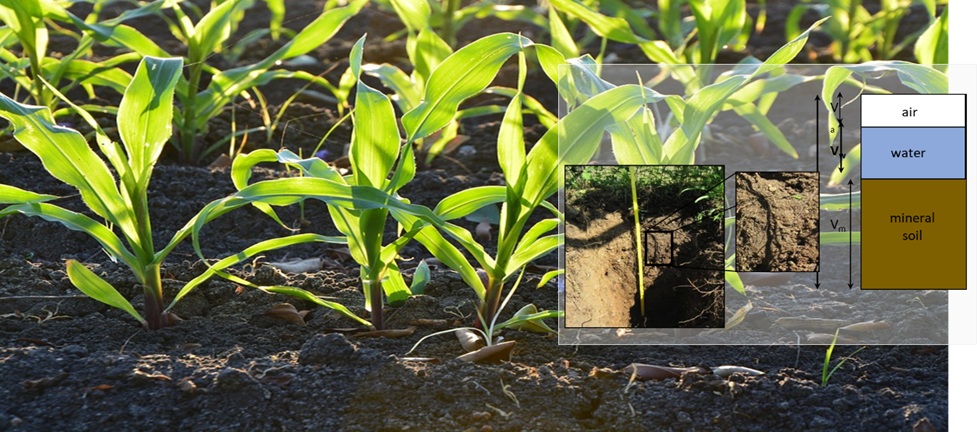#SoilMoisture #Agriculture #CropDevelopment #SoilMoistureMonitoring #SoilMoistureSensors #CropGrowth #Farming #Water-BalanceMethod #AgriculturalEfficiency
Understanding the Crucial Role of Soil Moisture in Agricultural Success
In the world of agriculture, the concept of soil moisture is akin to a gas tank for your car – essential for growth and productivity. Whether you’re a seasoned farmer, an agronomist, an agricultural engineer, or a scientist in the field, understanding soil moisture is paramount for ensuring bountiful yields and efficient resource management.
What is Soil Moisture, and How Much is Stored?
Before delving into the depths of soil moisture monitoring, let’s first grasp what it is and how it varies across different agricultural contexts. Soil moisture is the amount of water held within the soil, primarily in the root zone – the region from which plants draw their nutrients and hydration.
The depth of the root zone varies depending on the type of crop being cultivated, be it perennial or annual, and the characteristics of the soil. Perennial crops boast well-established roots, while annuals gradually develop their root systems throughout the growing season. The type of soil, too, plays a pivotal role. Sandy soils hold less water, like a small gas tank, whereas clay soils offer a larger reservoir for water storage.
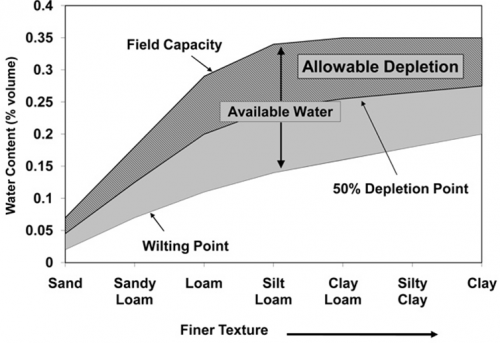
Notably, plants can’t tap into all the water present in the soil. The upper limit, known as Field Capacity, signifies the maximum water content following a saturation event. On the flip side, the Permanent Wilting Point signifies the point at which plants can no longer extract water from the soil, leading to wilting.
The difference between Field Capacity and Wilting Point represents Plant-Available Water, but not all of it is accessible to plants. The concept of Allowable Depletion considers factors like soil type and crop type to determine the amount of water that can be used before crop growth is adversely affected.
In essence, Plant-Available Water serves as the soil moisture that sustains crop growth until a moisture deficit threatens the health of the plants. Depending on the crop and soil characteristics, this critical point can range from 50% to 25% of the available moisture, well before wilting occurs.
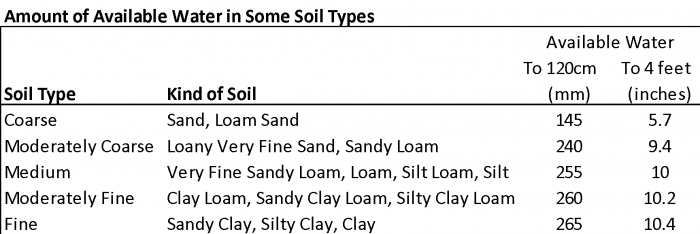
Studies worldwide, including in Canada, have underscored the importance of monitoring root zone soil moisture. Precise monitoring can lead to maximized yields and, in some instances, reduced input costs. In wheat, just one inch of soil water can translate to 7-8 additional bushels, with similar benefits seen in corn and canola. However, this success hinges on proper management of disease, pests, weeds, and nutrients.
How is Soil Moisture Measured?
Soil moisture measurement comes in two primary approaches: Measured and Water-Balance methods.
1. Measured Soil Moisture
Today, an array of soil moisture sensors is available for real-time measurements. Volumetric sensors quantify soil moisture in terms of water volume per unit depth, while tensiometric sensors gauge soil moisture based on suction force experienced by roots. These sensors provide invaluable insights into soil moisture dynamics.
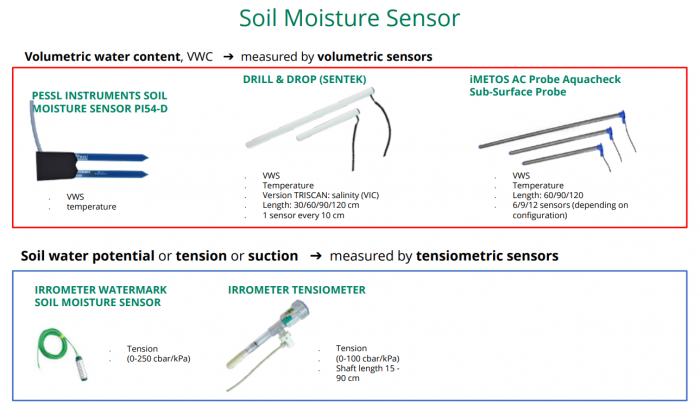
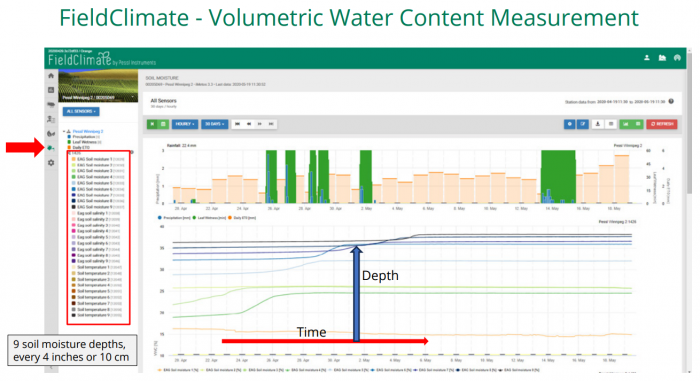
2. Water-Balance Soil Moisture
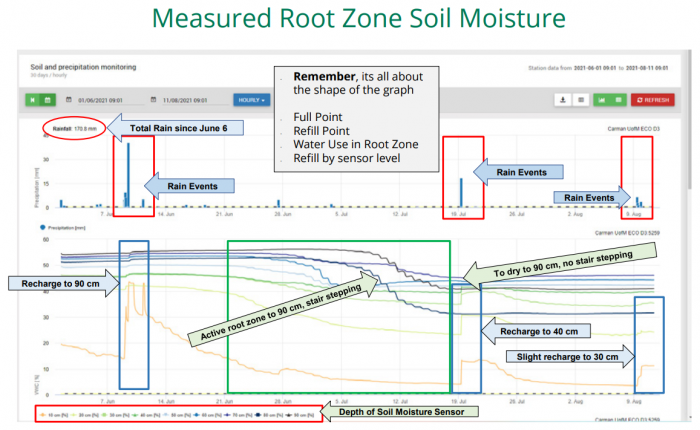
Traditionally, a water balance method is used, involving equations for evapotranspiration (ET0) alongside weather station data. This approach estimates daily water usage by crops based on factors like temperature, humidity, solar radiation, precipitation, wind speed, and crop-specific parameters.
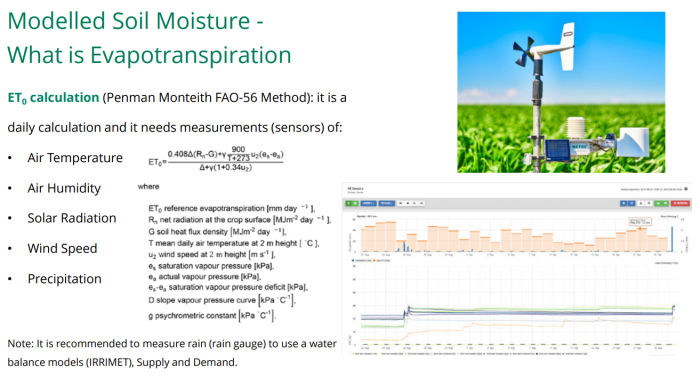
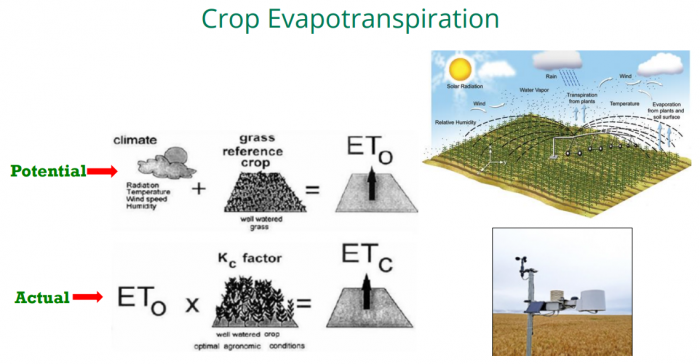
How Much Soil Water is Lost in a Day?
Understanding the daily water requirements of crops at different stages of development is crucial. Early on, when the canopy is small, water consumption can be as low as 1-2 mm per day. However, as the crop matures and the canopy expands, daily water usage can reach 5-9 mm or more, emphasizing the need for adequate soil moisture and irrigation.
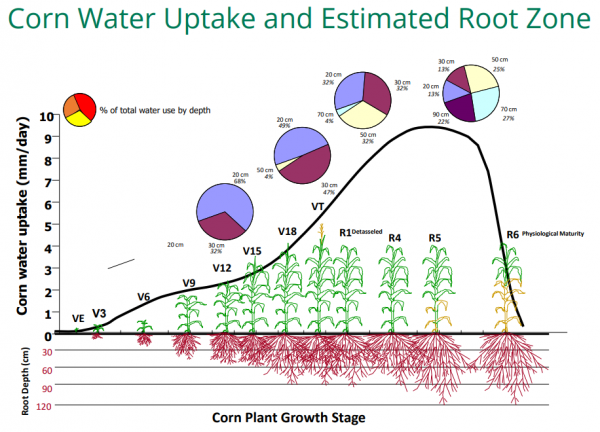
Measured or Water-Balance Soil Moisture Values in FieldClimate and FarmView Cropzones
Both measured and modeled soil moisture values can be tracked in FieldClimate and FarmView, enabling farmers and experts to make informed decisions for optimizing crop growth.
In conclusion, soil moisture monitoring is the bedrock of modern agriculture. It ensures that crops receive the hydration they need for growth, leading to higher yields and resource efficiency. Whether through sensor-based measurements or water-balance calculations, keeping an eye on soil moisture is the key to successful farming.

